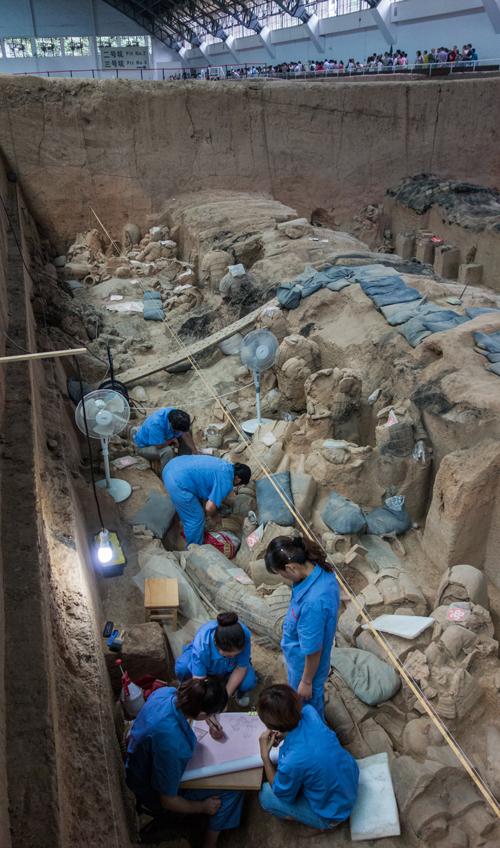
What Has Been Uncovered of Qin Shi Huang's Tomb?
The tomb of Qin Shi Huang, China's first emperor, is one of the most magnificent and mysterious archaeological sites in the world. While the central tomb itself remains unopened, the surrounding complex offers a breathtaking glimpse into the emperor's vision of the afterlife.
The Terracotta Army Pits
To date, four pits have been partially excavated near the tomb mound.
Pit 1
The largest and most impressive, Pit 1, houses the main army formation. Thousands of life-size terracotta soldiers stand in battle formation, each with unique facial features and armor, showcasing the incredible craftsmanship of the era.
Pits 2 and 3
Pit 2 features a mixed force of chariots, cavalry, and infantry, suggesting a more complex military unit. Pit 3, smaller in scale, seems to represent a command post, with high-ranking officers and a chariot.
Pit 4: The Unfinished Army
The fourth pit stands in stark contrast, entirely empty. Archaeologists believe this pit was intended for more soldiers and chariots, but its emptiness hints at a sudden halt in construction, perhaps due to the emperor's death.
The Magnitude of the Discovery
The scale of the terra-cotta army is truly astounding. Archaeologists estimate that the pits may contain as many as 8,000 figures, along with countless weapons, horses, and chariots.
The Unopened Tomb
While the unearthed pits offer incredible insights, the central tomb of Qin Shi Huang remains unexcavated, leaving its secrets shrouded in mystery. Historical records describe a lavish burial chamber adorned with jewels and a ceiling designed to resemble the celestial heavens.
FAQs
Why hasn't the main tomb been excavated?
Several factors contribute to the decision to leave the main tomb untouched. Primarily, concerns about preserving the delicate artifacts within the tomb, particularly in light of past experiences with less advanced preservation techniques, weigh heavily on researchers. Additionally, ethical considerations regarding disturbing the emperor's final resting place are also a factor.
What else has been found near the tomb?
Aside from the terracotta army pits, archaeologists have unearthed a vast necropolis surrounding the tomb mound. This includes the tombs of imperial concubines, as well as other burial pits containing bronze sculptures of officials, acrobats, and even waterfowl.
What is the significance of the terracotta army?
The terracotta army is an unparalleled example of ancient Chinese artistry and military might. It serves as a testament to the power and ambition of Qin Shi Huang, and provides invaluable insights into the military organization, weaponry, and artistic traditions of the Qin dynasty.